No one likes having mosquitoes in their yard. Their presence ruins barbeques, disturbs peaceful evenings and puts a damper on outdoor activities. We’ve all tried every trick in the book to keep them away, from candles to lawn treatments.
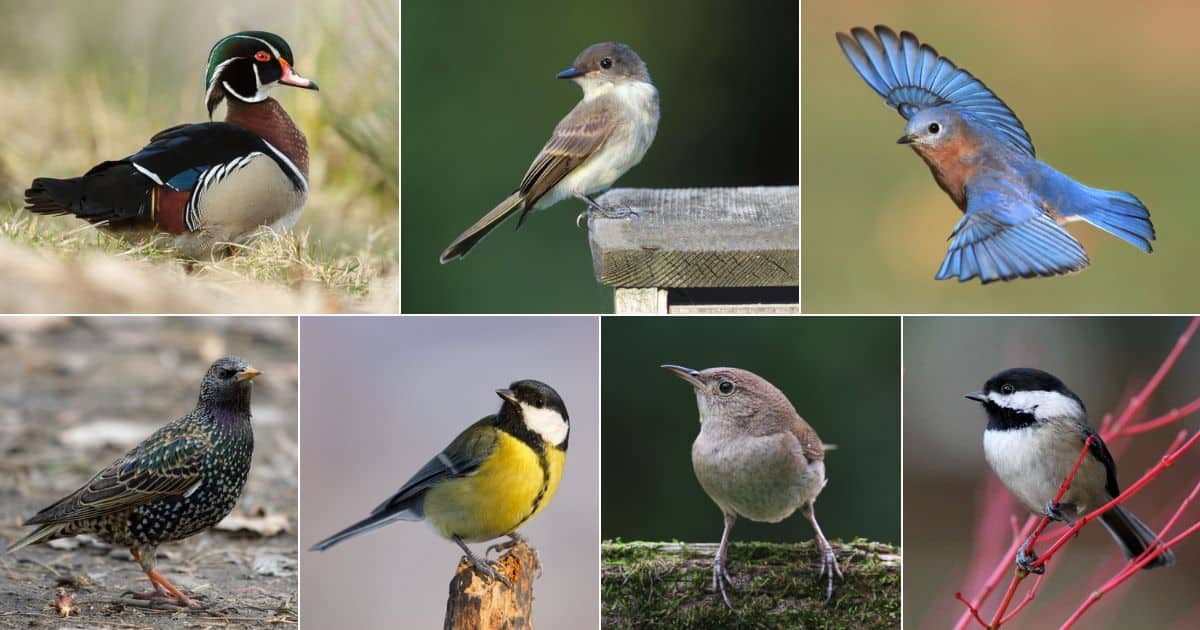
But what if the most effective mosquito repellent is nature itself? Attracting birds to your yard might just be the perfect solution to your mosquito problem.
Contents
Do Birds Keep Mosquitoes Away?
Birds eat a lot of things, but one of their main sources of nutrition is insects. And most bird species aren’t particularly picky – and they will certainly feed on mosquitoes. While the birds won’t necessarily scare mosquitoes off, they will hunt them down and eat them.
How To Attract Birds
To better protect your property from mosquitoes, you can try attracting more birds to your yard. Doing so is fairly simple; just follow a few of these tips:
- Hang nesting boxes
- Don’t use pesticides
- Install a birdbath
- Hang feeders with various birdseed
- Buy plants that grow berries, seeds, and nuts
- Keep cats inside
Even if you can only manage a few of these steps, you can increase your chances of attracting birds into your yard.
21 Birds That Eat Mosquitoes
Several bird species eat insects, including mosquitoes, as part of their daily diet. Luckily, many of these species are very common and may even make your yard their home. Here are 21 birds that eat mosquitoes you want to keep around.
1. Purple Martin
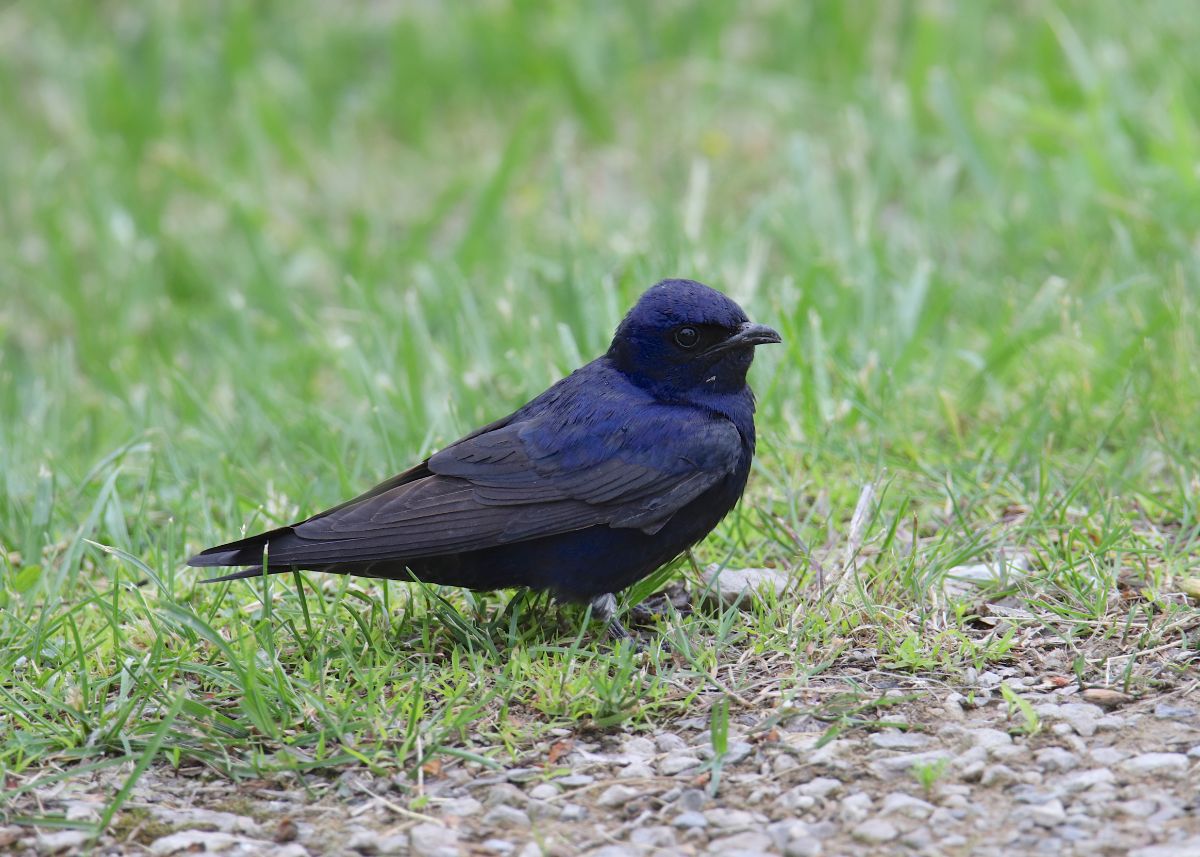
Scientific Name: Progne subis
Length: 7.5 – 7.9 in
Weight: 1.6 – 2.1 oz
Wingspan: 15.3 – 16.1 in
Despite their name, Purple Martins are not actually as purple as you’d think. Instead, this stunning, large swallow is mostly black with dark blue and purplish feathers on its wings, head, and tail. It catches its food midair, making them ideal for swooping in on mosquitoes.
2. Eastern Phoebe
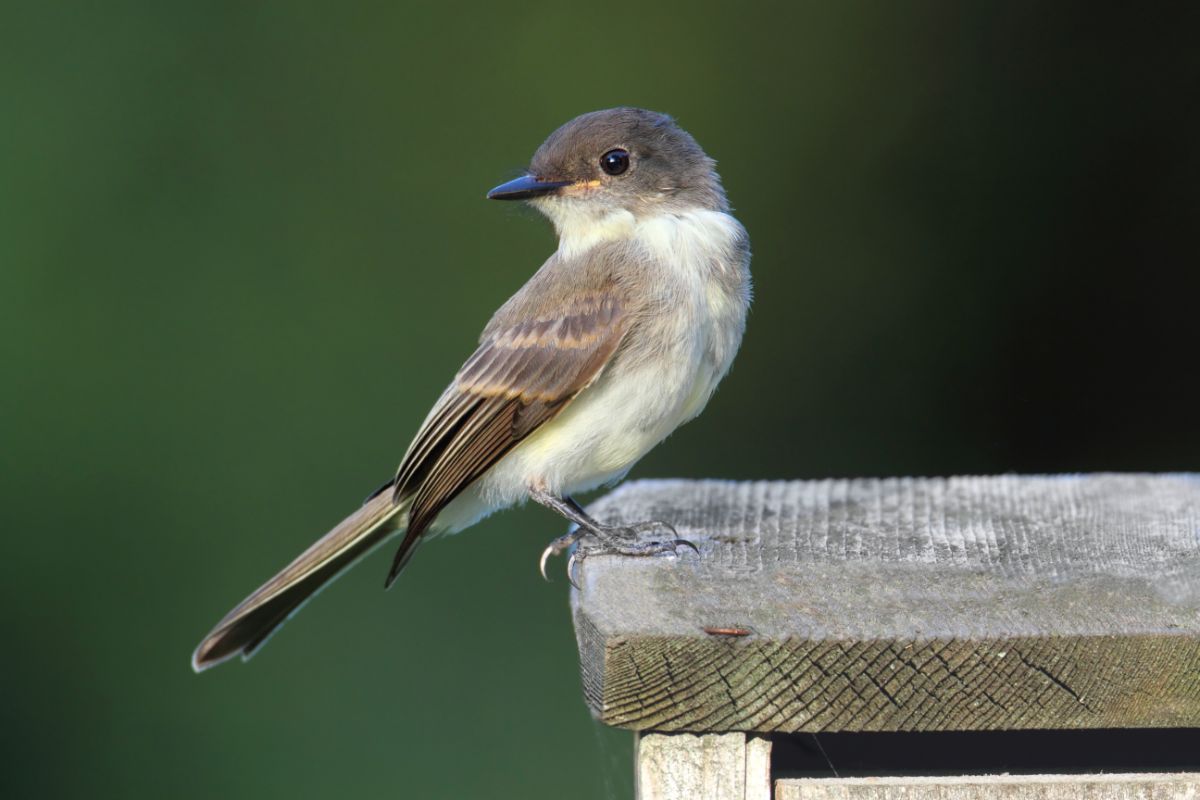
Scientific Name: Sayornis phoebe
Length: 5.5- 6.7 in
Weight: 0.6 – 0.7 oz
Wingspan: 10.2 – 11 in
The Eastern Phoebe is a brown and white songbird local to the woodlands of the Eastern US. They often create their unique mud nests anywhere there’s shelter, including barns, bridges, and houses, which keeps them close to humans.
3. Northern Cardinal
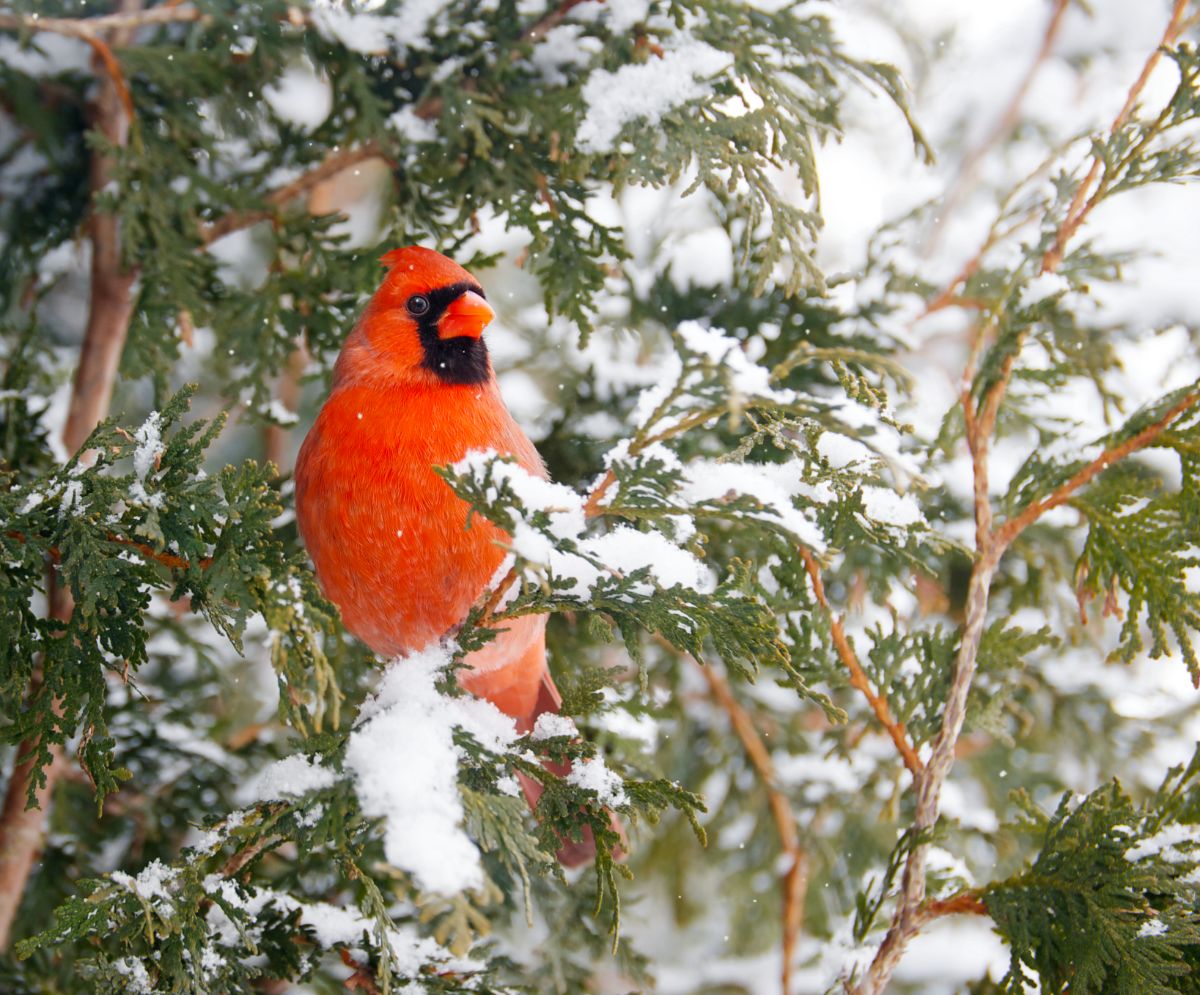
Scientific Name: Cardinalis cardinalis
Length: 8.3 – 9.1 in
Weight: 1.5 – 1.7 oz
Wingspan: 9.8 – 12.2 in
Most of us instantly recognize the Northern Cardinal by its bright-red feathers present on males.
These mosquito-eating birds are prevalent from the Central US to its eastern coast. Use a bird feeder to draw them onto your property; they especially enjoy sunflower seeds.
4. Downy Woodpecker
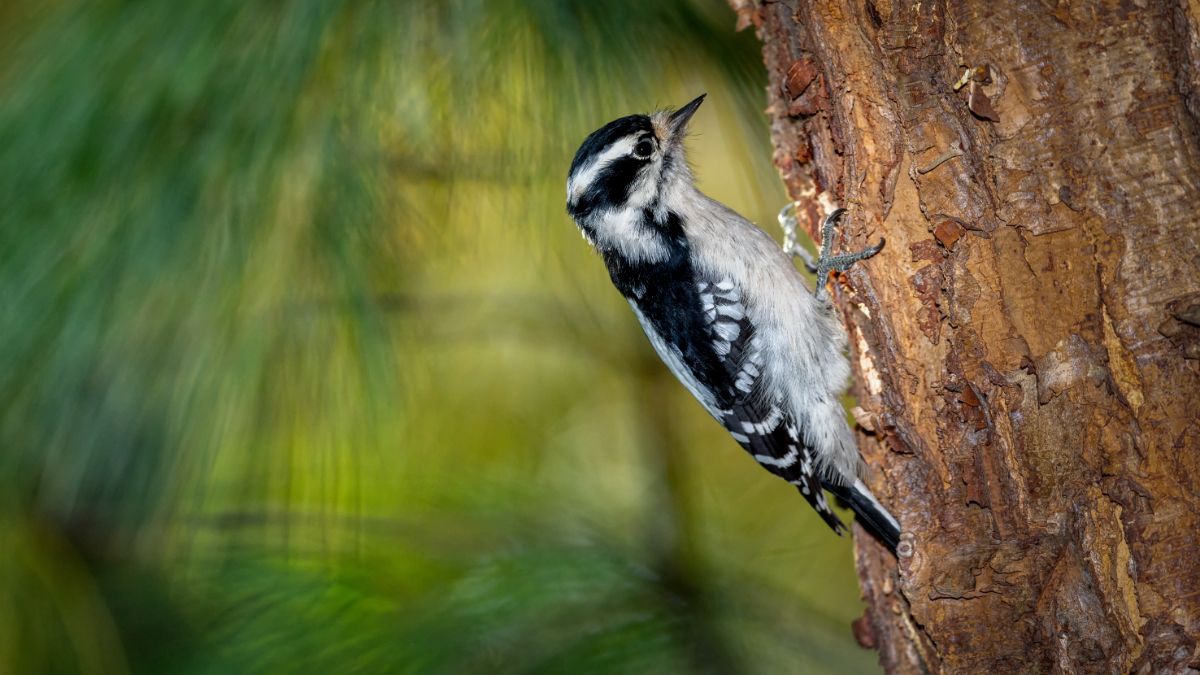
Scientific Name: Dryobates pubescens
Length: 5.5 – 6.7 in
Weight: 0.7 – 1.0 oz
Wingspan: 9.8 – 11.8 in
This small woodpecker variety is a common site throughout the majority of the US and several parts of Canada. Its habitat varies from yards to city parks, and you’ll know it when you hear the bird’s high-pitched notes.
Although Downy Woodpeckers feed on mosquitoes, they also enjoy a wide range of seeds.
5. Barn Swallows
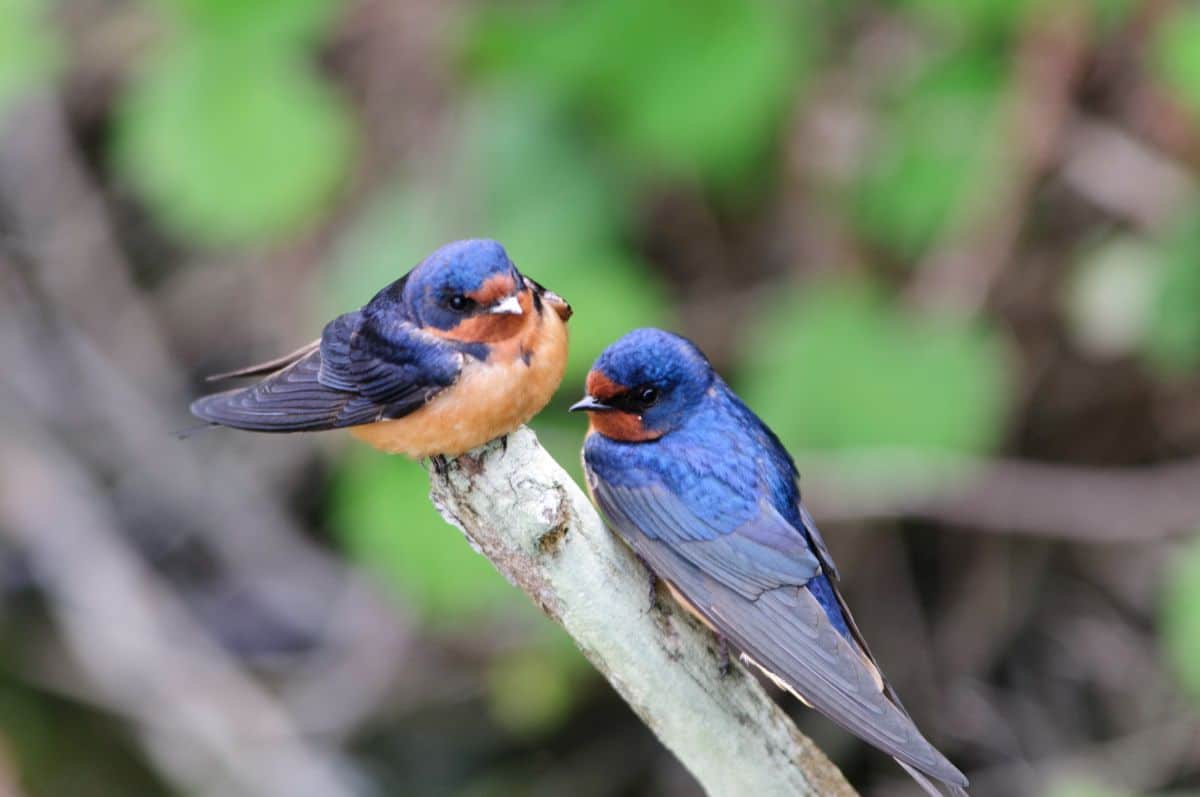
Scientific Name: Hirundo rustica
Length: 5.9 – 7.5 in
Weight: 0.6 – 0.7 oz
Wingspan: 11.4 – 12.6 in
Barn Swallows are not only super common birds, but they’re known for their diet of insects. Their quick, graceful movements make it easy for them to spot and catch unsuspecting prey.
The small bird offers a gorgeous appearance with blue-black wings and tail paired with light tan and rusty accents.
6. American Robin
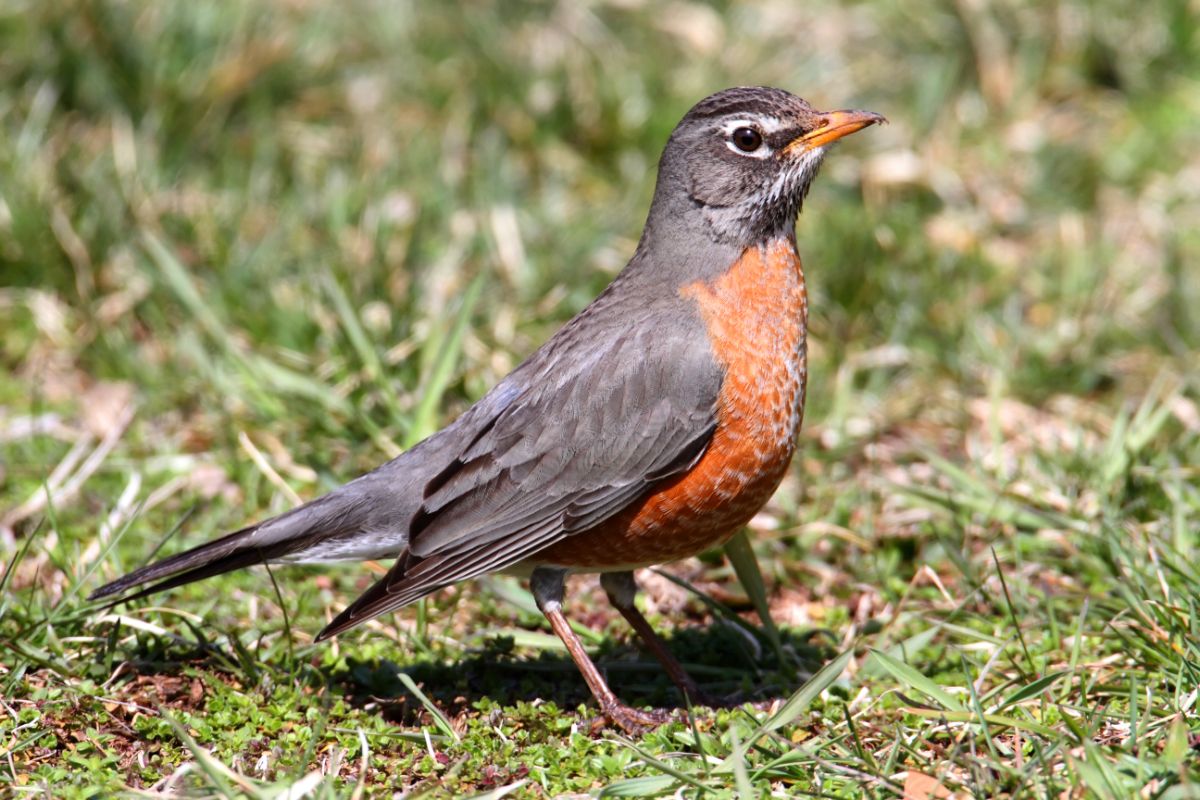
Scientific Name: Turdus migratorius
Length: 7.9 – 11 in
Weight: 2.7 – 3 oz
Wingspan: 12.2 – 15.8 in
The American Robin is one of the most common and recognizable birds in the US. Its black head is accompanied by its gray body and famous rusty-orange belly.
You can find these mosquito-eating birds almost everywhere, from yards and parks to woodlands and forests.
7. Baltimore Oriole
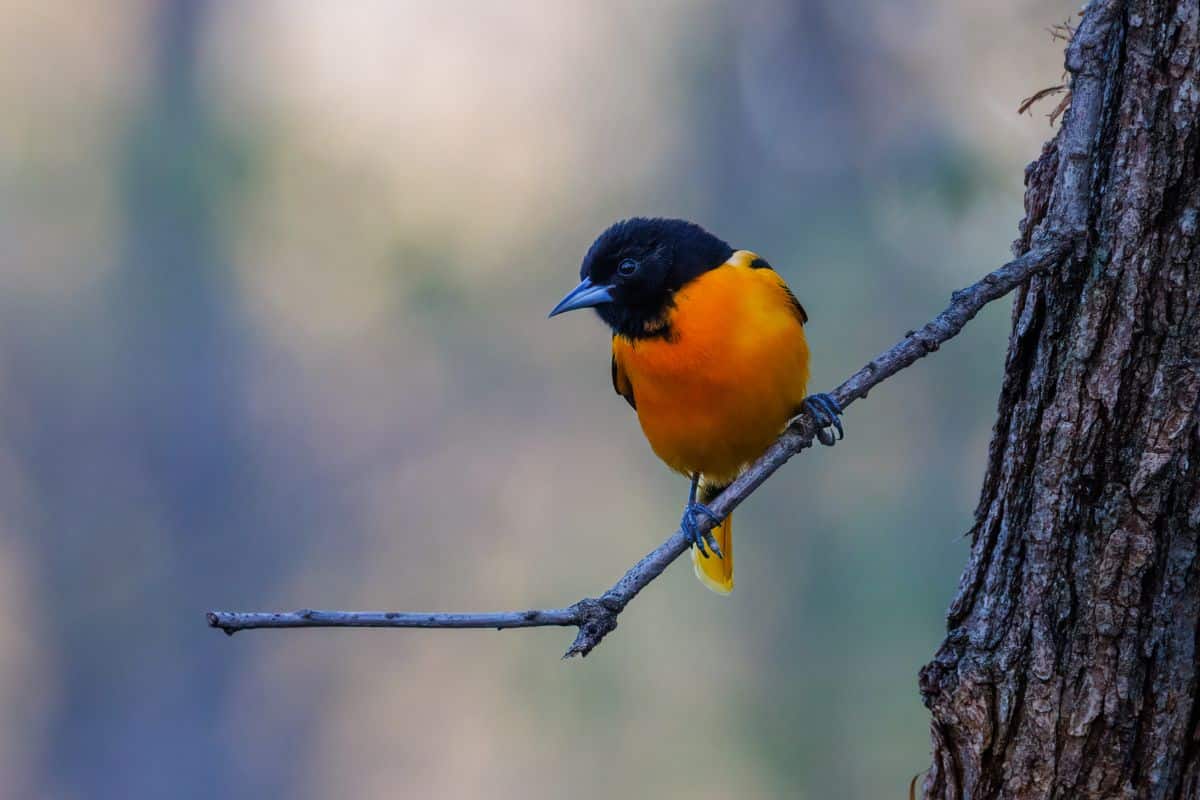
Scientific Name: Icterus galbula
Length: 6.7 – 7.5 in
Weight: 1.1 – 1.4 oz
Wingspan: 9.1 – 11.8 in
The Baltimore Oriole is known for its striking appearance, featuring a bright orange underbelly in stark contrast to black wings and a black head.
Though this bird species will feed on the mosquitoes in your yard, they’re also easily drawn to bird feeders.
8. House Wren
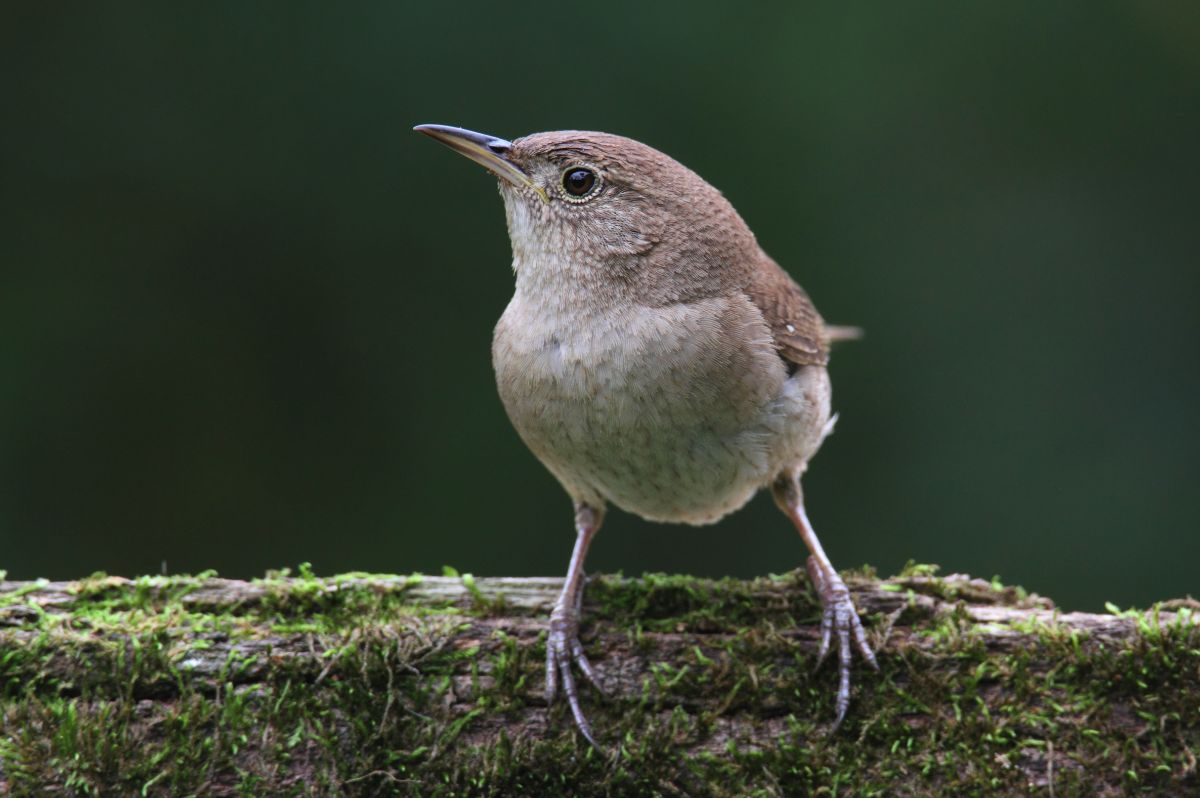
Scientific Name: Troglodytes aedon
Length: 4.3 – 5.1 in
Weight: 0.3 – 0.4 oz
Wingspan: 5.9 in
This tiny bird may seem plain, but it has a beautiful call. Its small, lightweight body makes it easy for the House Wren to fly through trees and bushes in search of insects.
House Wrens love making homes just about anywhere, but if you provide them with birdhouses, they’re sure to show up.
9. Tree Swallow
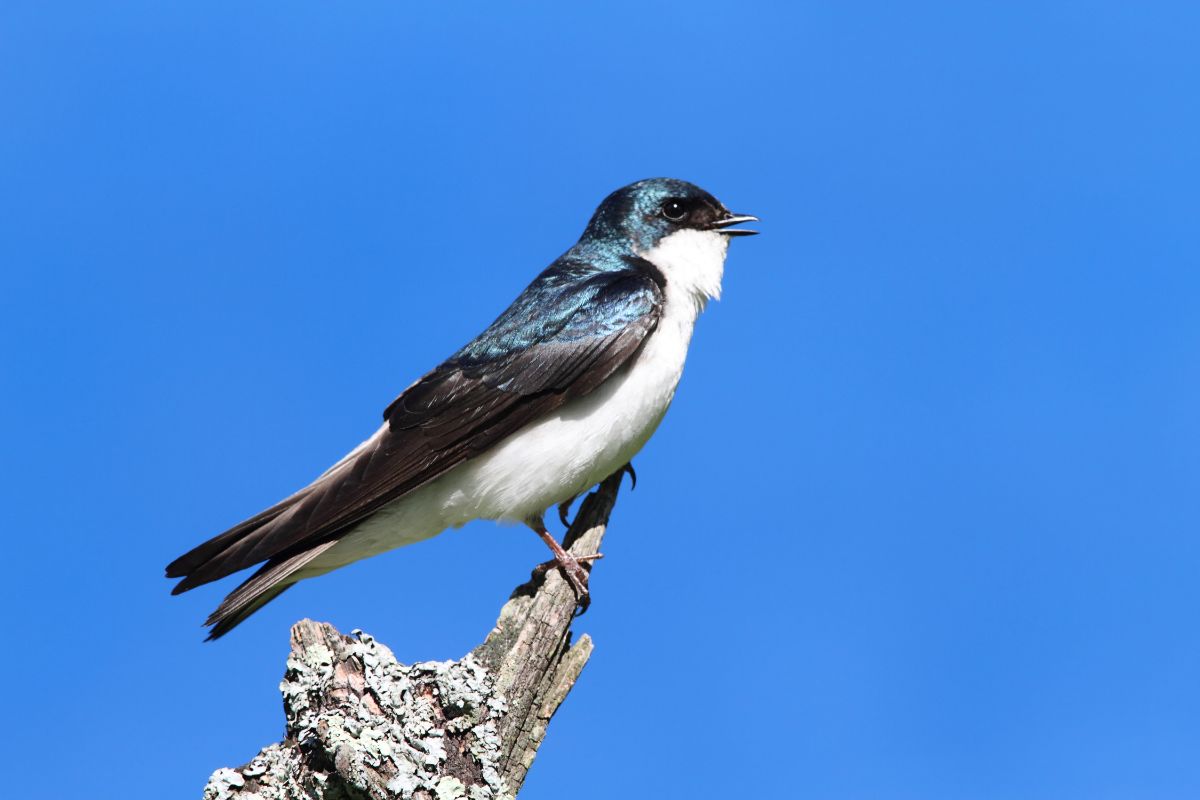
Scientific Name: Tachycineta bicolor
Length: 4.7 – 5.9 in
Weight: 0.6 – 0.9 oz
Wingspan: 11.8 – 13.8 in
Despite the commonality of the bird, the Tree Swallow has a truly unique and beautiful appearance. Tree Swallows love to chase insects like mosquitoes for meals, and they’ll make a home in any yard with trees or nest boxes.
10. Great Tit
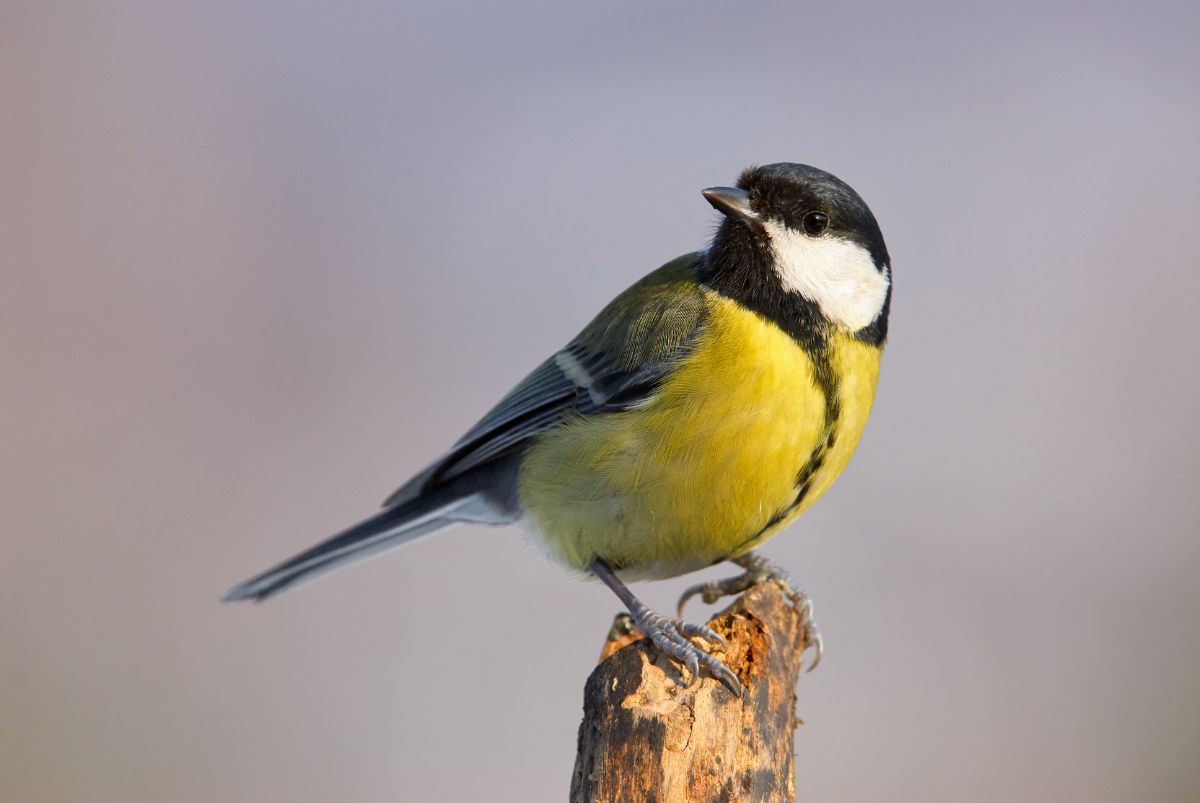
Scientific Name: Parus major
Length: 5.5 cm
Weight: 0.6 oz
Wingspan: 9.4 in
Based on color alone, you might think the Great Tit was a tropical bird. Its impressive features boast bright yellow, green, black, white, and gray-blue colors.
Along with seeds and nuts, Great Tits enjoy feeding on insects and can quickly become a favorite to attract to your yard.
11. Nashville Warbler
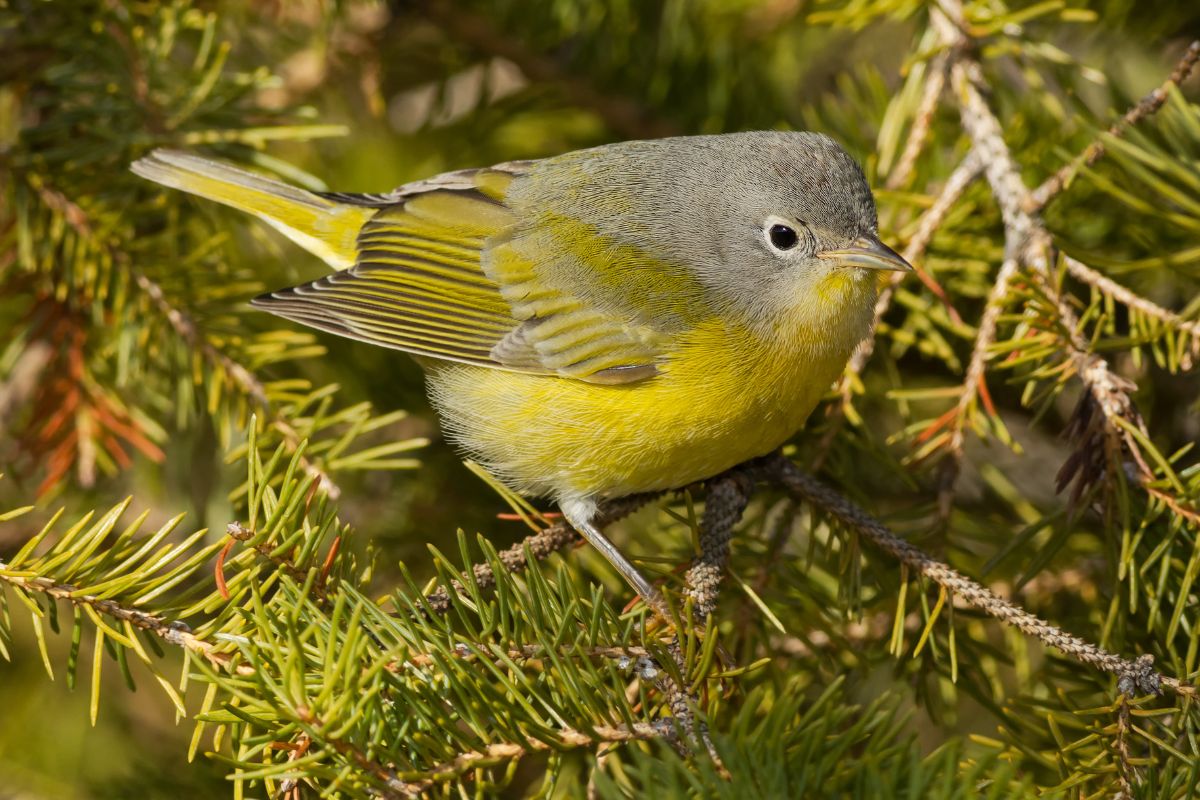
Scientific Name: Leiothlypis ruficapilla
Length: 4.3 – 5.1 in
Weight: 0.2 – 0.5 oz
Wingspan: 6.7 – 7.9 in
Handy as a mosquito catcher and a lovely songster to add to your yard, the Nashville Warbler is a prevalent North American species that pop up during the migration season.
The pretty little bird is a sight to see, proudly showcasing a bright yellow belly and gray head. It hunts down mosquitoes while exploring tree branches.
12. Red-breasted Nuthatch
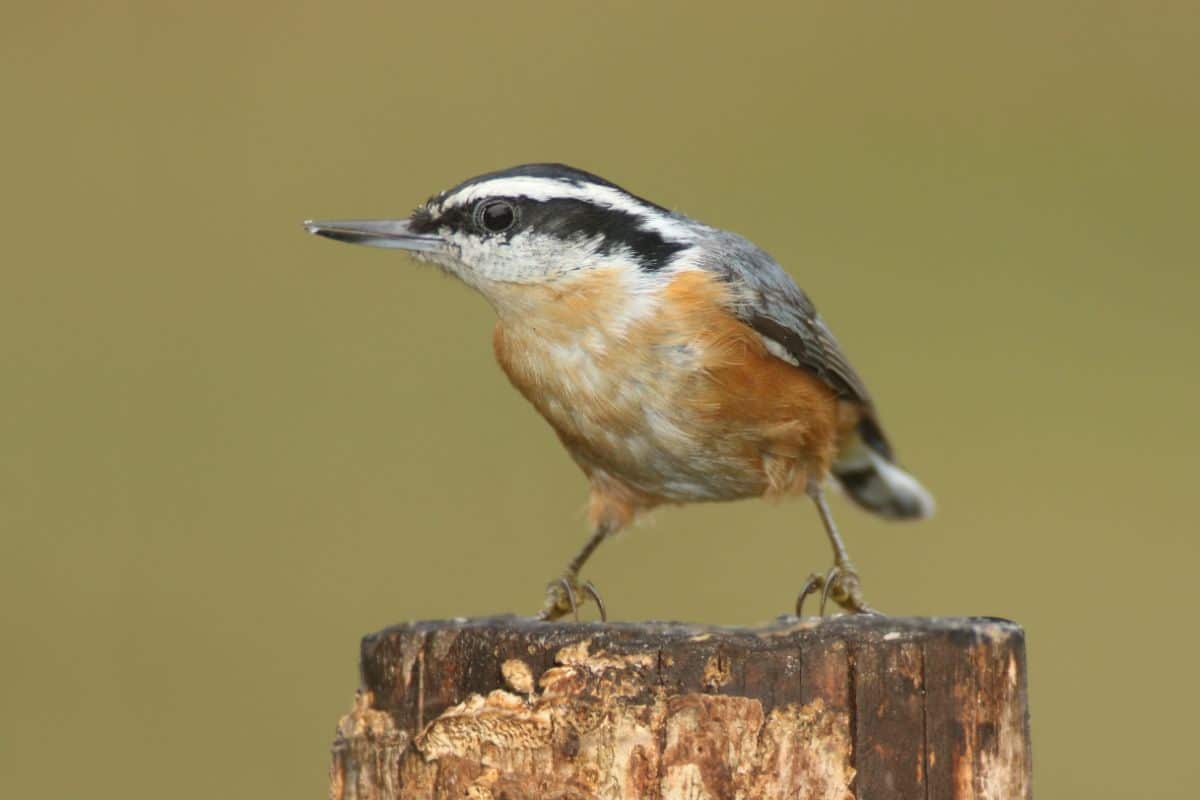
Scientific Name: Sitta canadensis
Length: 4.3 in
Weight: 0.3 – 0.5 oz
Wingspan: 7.1 – 7.9 in
The Red-breasted Nuthatch is a short, plump bird with a flat head and a long beak. It’s a songbird easily recognized by its quiet yet horn-like call. It loves wooded areas, as it hops up and down tree trunks in search of insects in the bark.
13. Eastern Bluebird
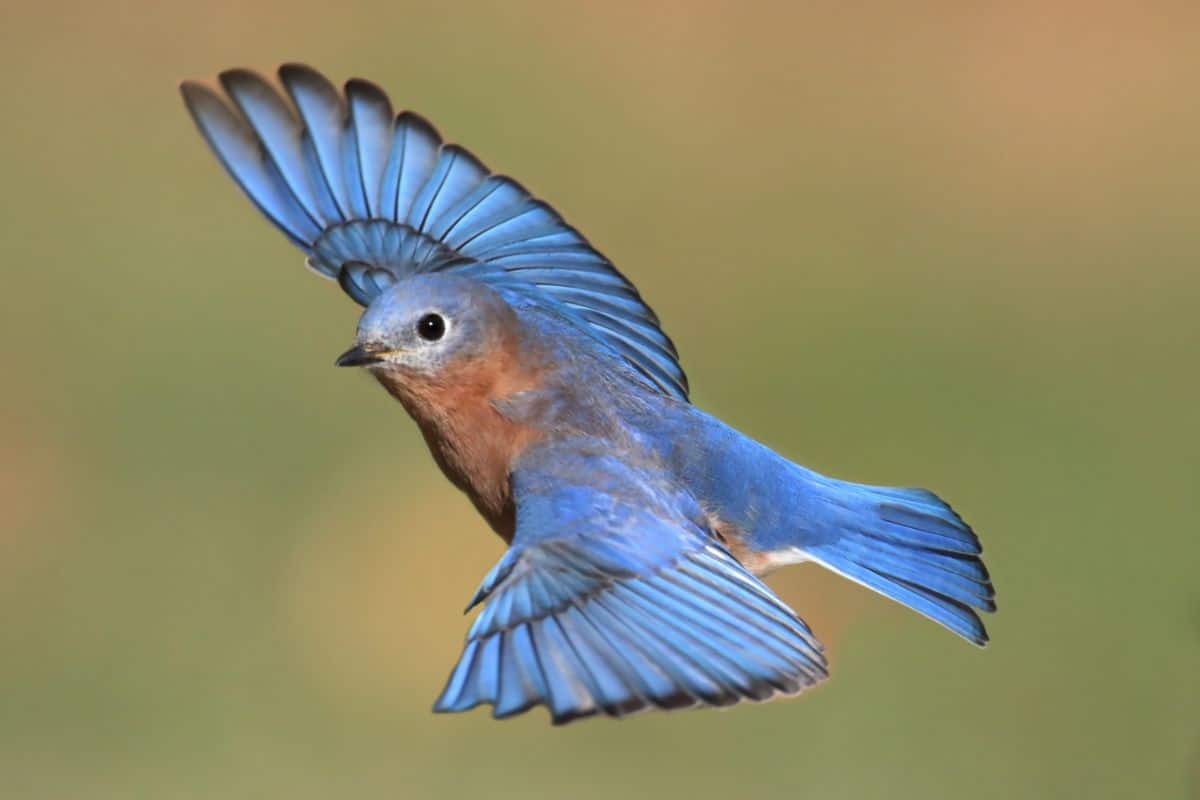
Scientific Name: Sialia sialis
Length: 6.3 – 8.3 in
Weight: 1.0 – 1.1 oz
Wingspan: 9.8 – 12.6 in
Spend some time in the eastern part of the US during the summer, and you’re bound to see the beloved bright blue birds appropriately named Bluebirds.
This bird not only loves insects like mosquitoes, but it’s happy to spend time in residential areas.
14. Wood Duck
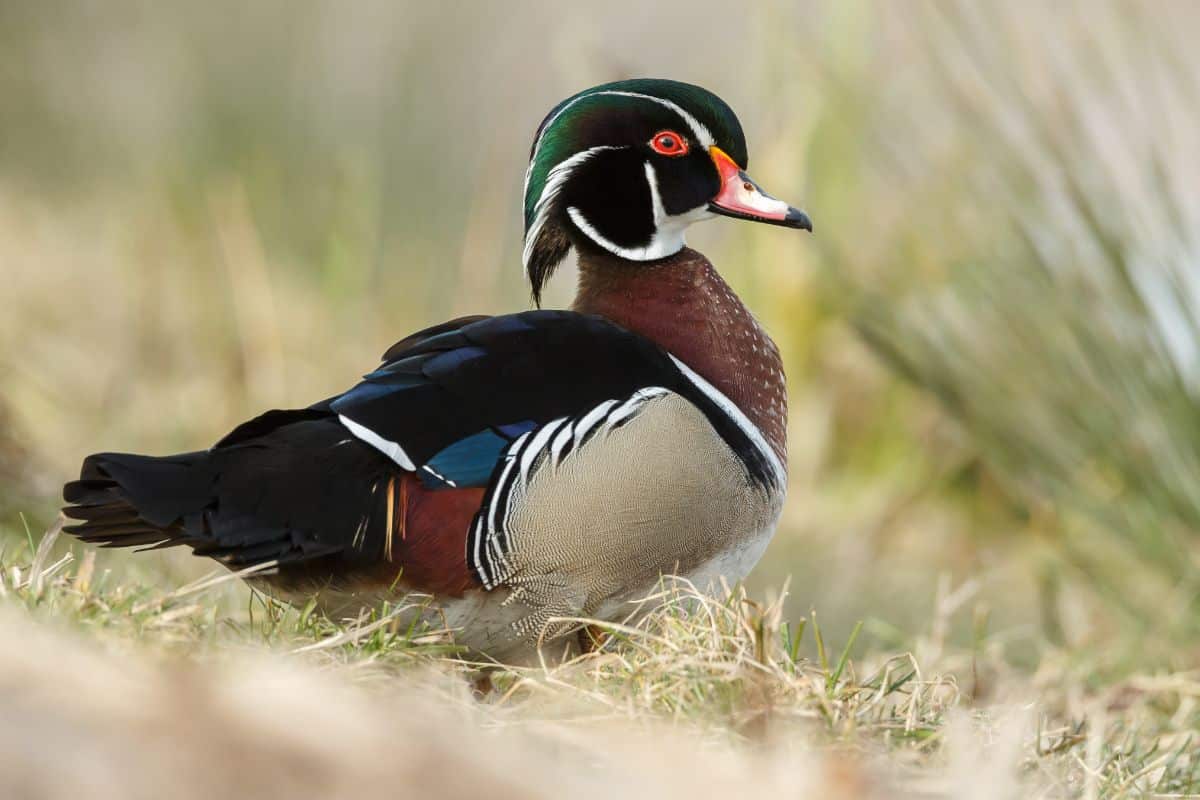
Scientific Name: Aix sponsa
Length: 18.5 – 21.3 in
Weight: 16 – 30.4 oz
Wingspan: 26 – 28.7 in
You can count on pretty much any kind of duck to take care of mosquitoes in your yard. Since ducks live on the water, they eat bugs on the surface. If you live near water or can set up a small pond, Wood Ducks are a common species to aim for.
15. Violet-crowned Hummingbird
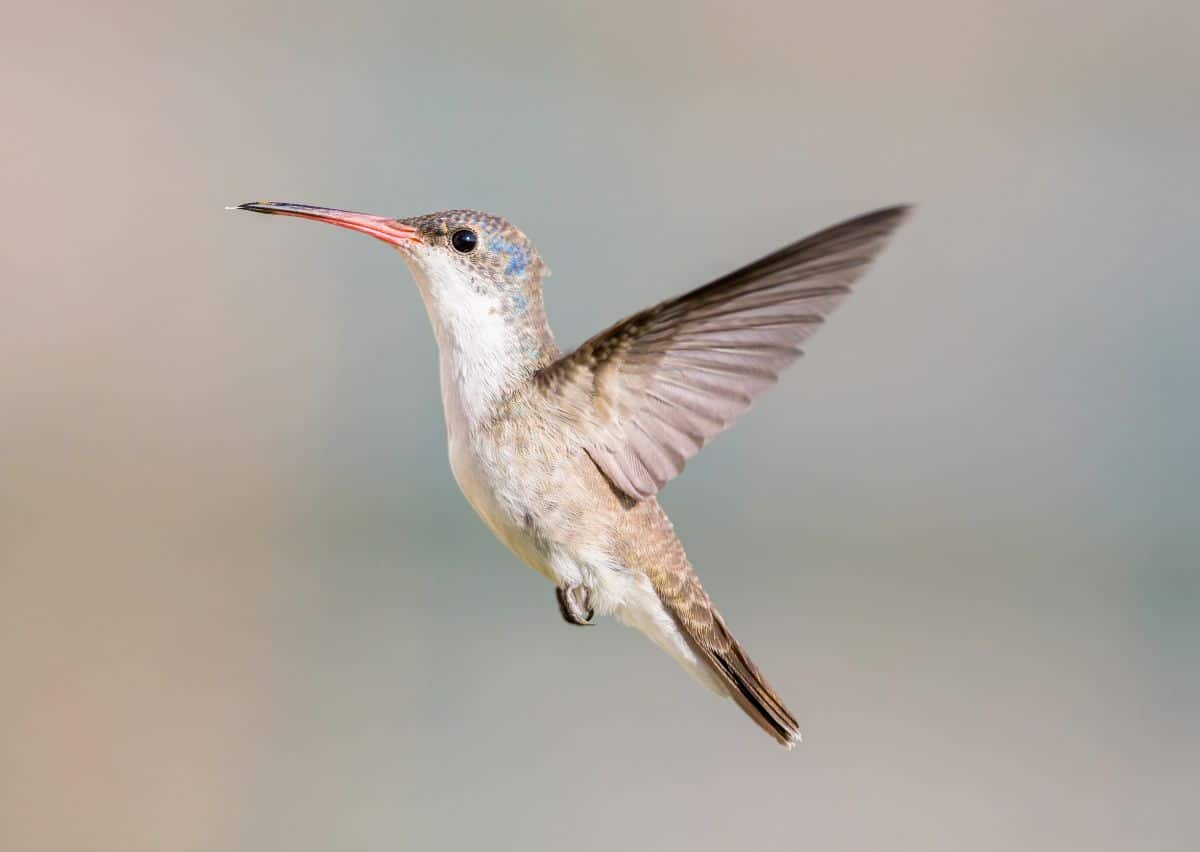
Scientific Name: Leucolia violiceps
Length: 4.3 in
Weight: 0.2 oz
Wingspan: 5.9 in
The Violet-crowned Hummingbird is a beautiful species with a violet head, a long orange beak, and a white and brown body. While most hummingbirds mainly feed on nectar, this one will also eat small insects like mosquitoes.
16. European Starling
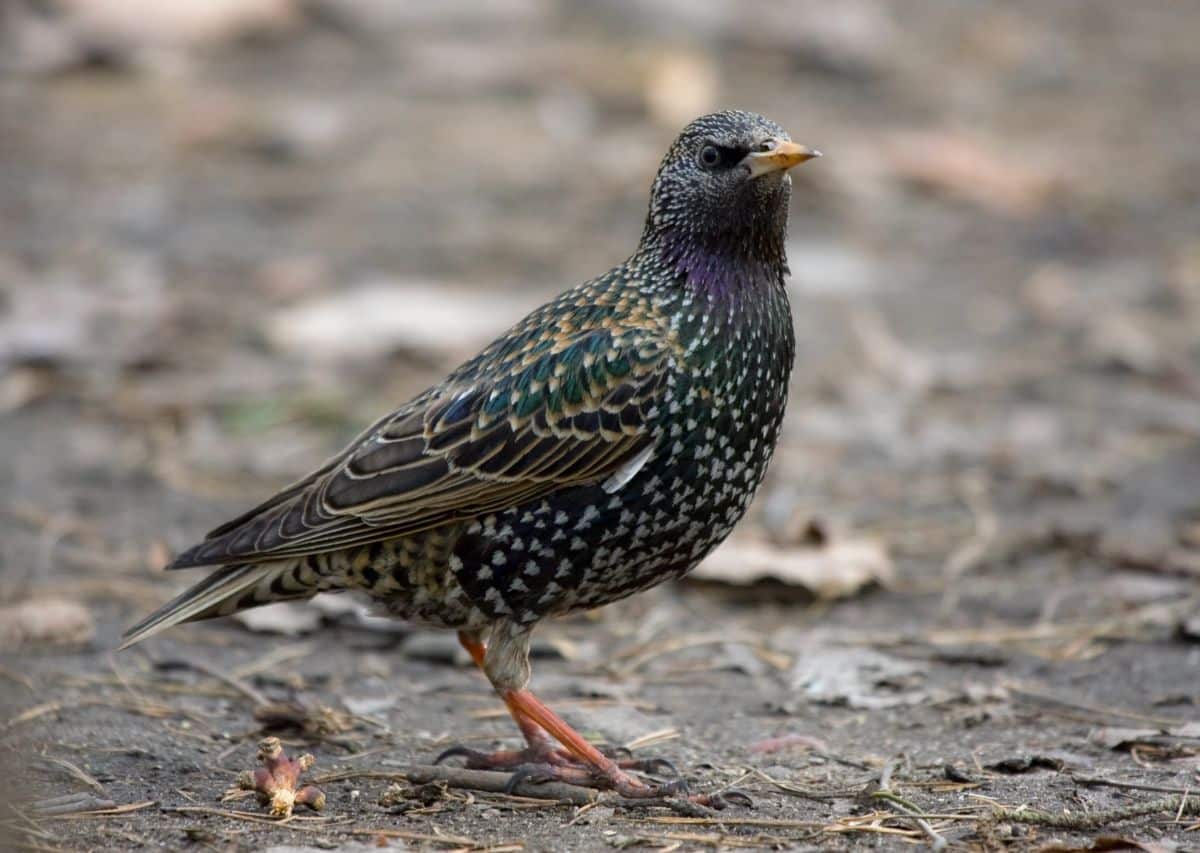
Scientific Name: Sturnus vulgaris
Length: 7.9 – 9.1 in
Weight: 2.1 – 3.4 oz
Wingspan: 12.2 – 15.8 in
The European Starling is North America’s most common songbird. It has dark yet colorful glossy feathers that have an iridescent glow. Starlings love residential areas and will certainly feed on mosquitoes.
17. Red-winged Blackbird
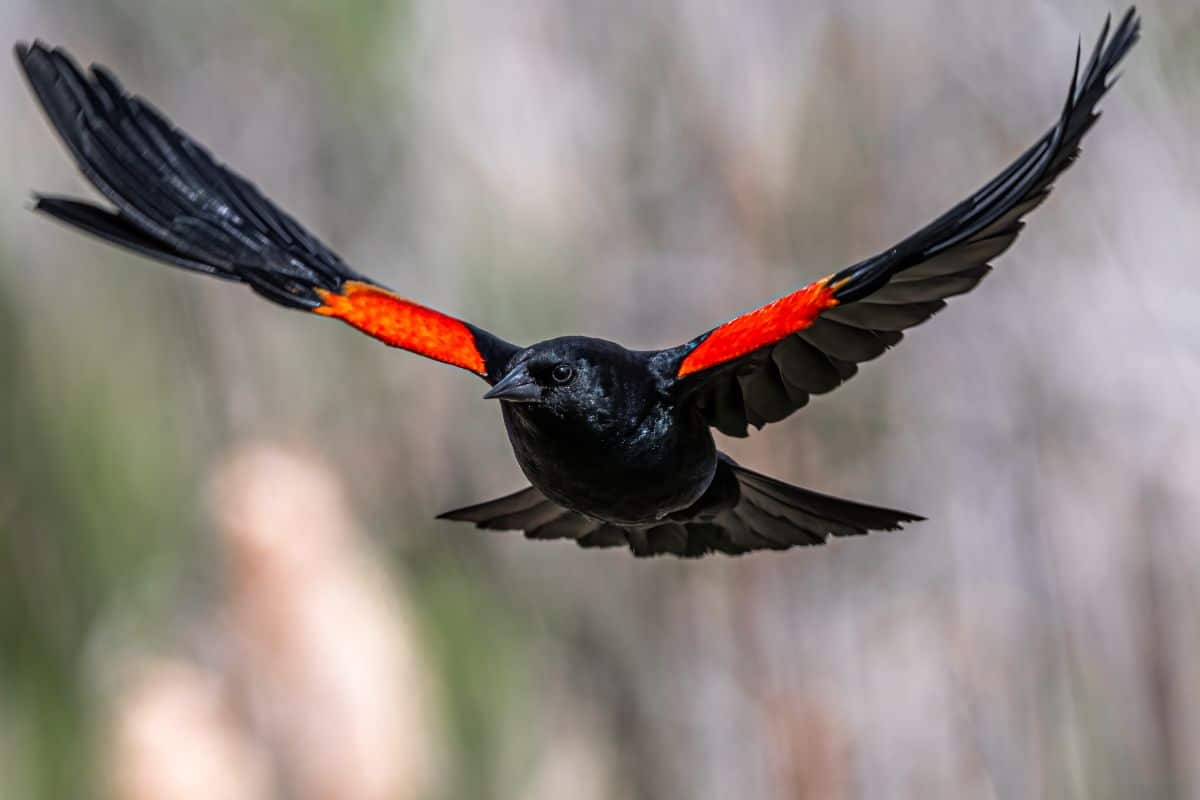
Scientific Name: Agelaius phoeniceus
Length: 6.7 – 9.1 in
Weight: 1.1 – 2.7 oz
Wingspan: 12.2 – 15.8 in
The Red-winged Blackbird is a striking creature with an all-black appearance, except for its bright red and yellow shoulders. It’s one of the most common birds in North America, and it feeds on insects of all types.
18. Grackle
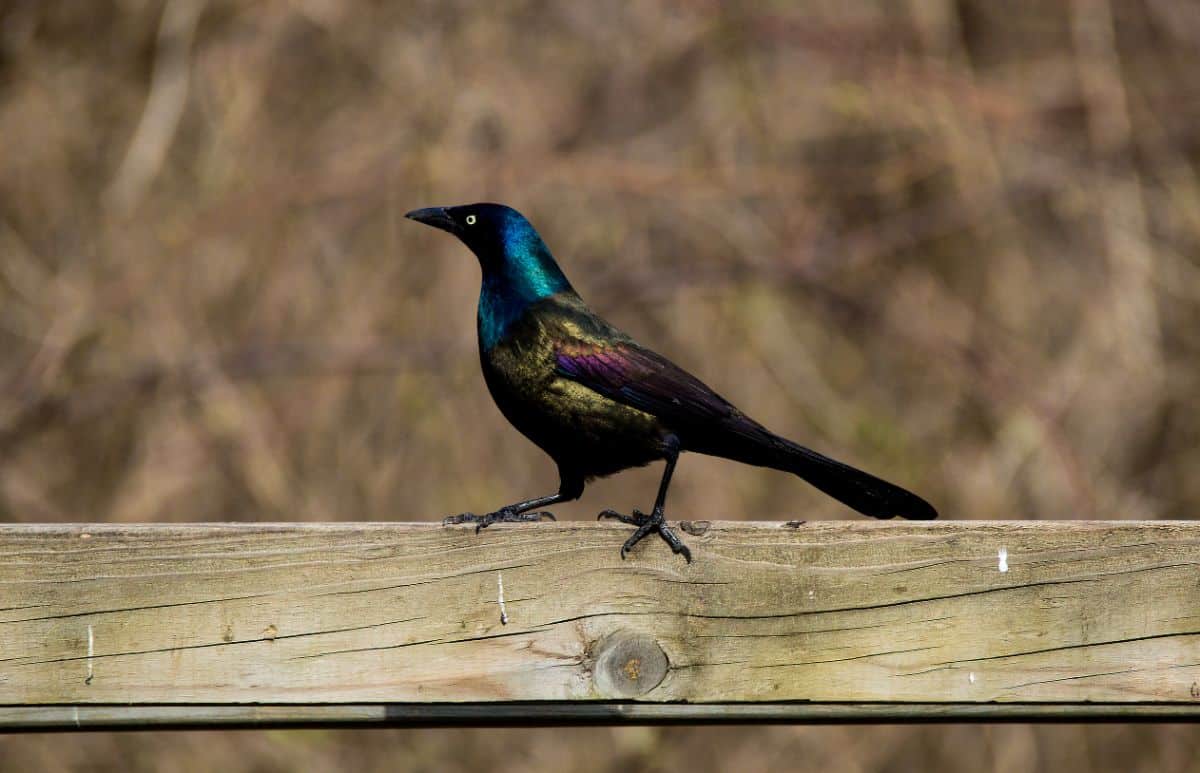
Scientific Name: Quiscalus quiscula
Length: 11 – 13.4 in
Weight: 2.6 – 5 oz
Wingspan: 14.2 – 18.1 in
The dark, glossy feathers of the Common Grackle will instantly catch your attention, with shades of black, blue, green, yellow, and purple mixed in. This bird eats almost anything and loves to forage insects on lawns.
19. Black-capped Chickadee
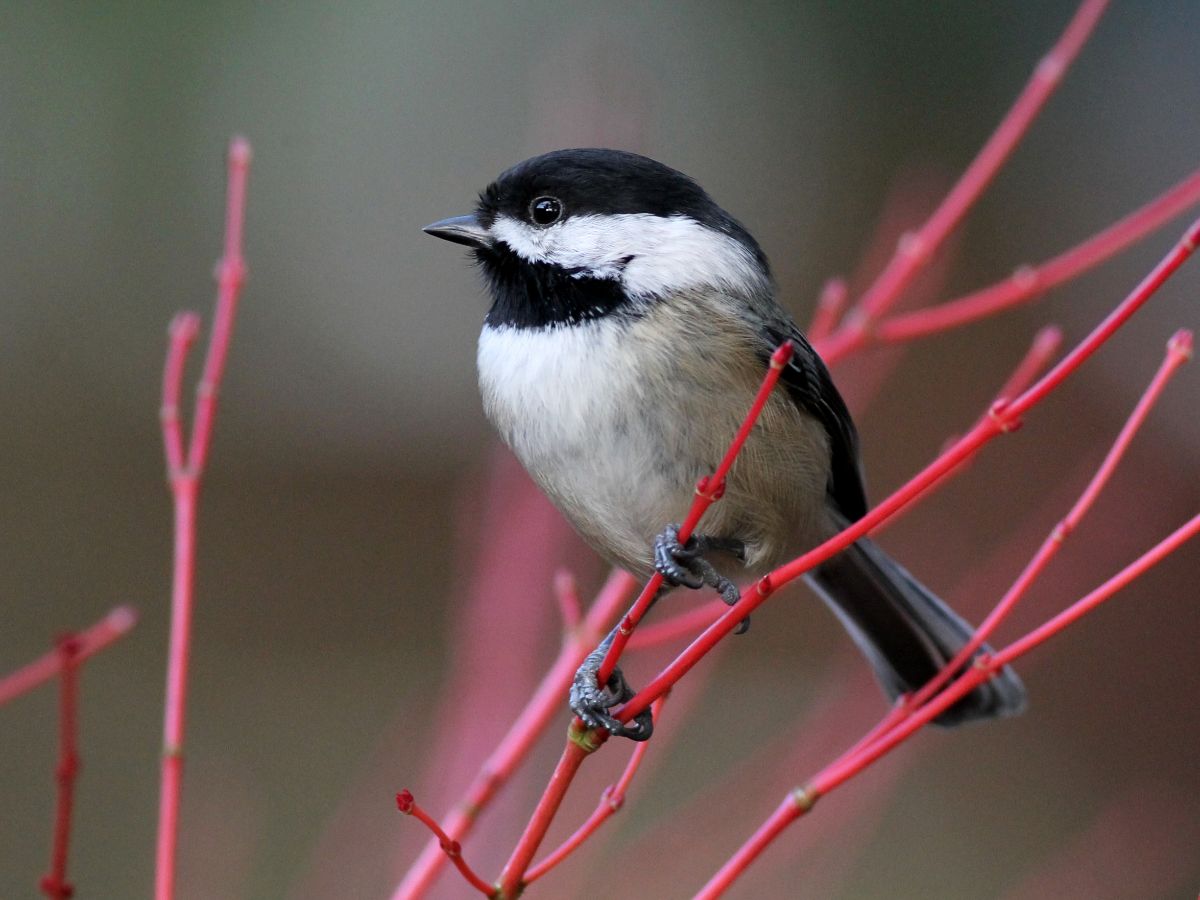
Scientific Name: Poecile atricapillus
Length: 4.7 – 5.9 in
Weight: 0.3 – 0.5 oz
Wingspan: 6.3 – 8.3 in
The stunning yet small Black-capped Chickadee showcases shades of black, gray, and white on its stout body. This species is highly curious about humans and won’t shy away from residential areas where it can hunt down mosquitoes.
20. Song Sparrow
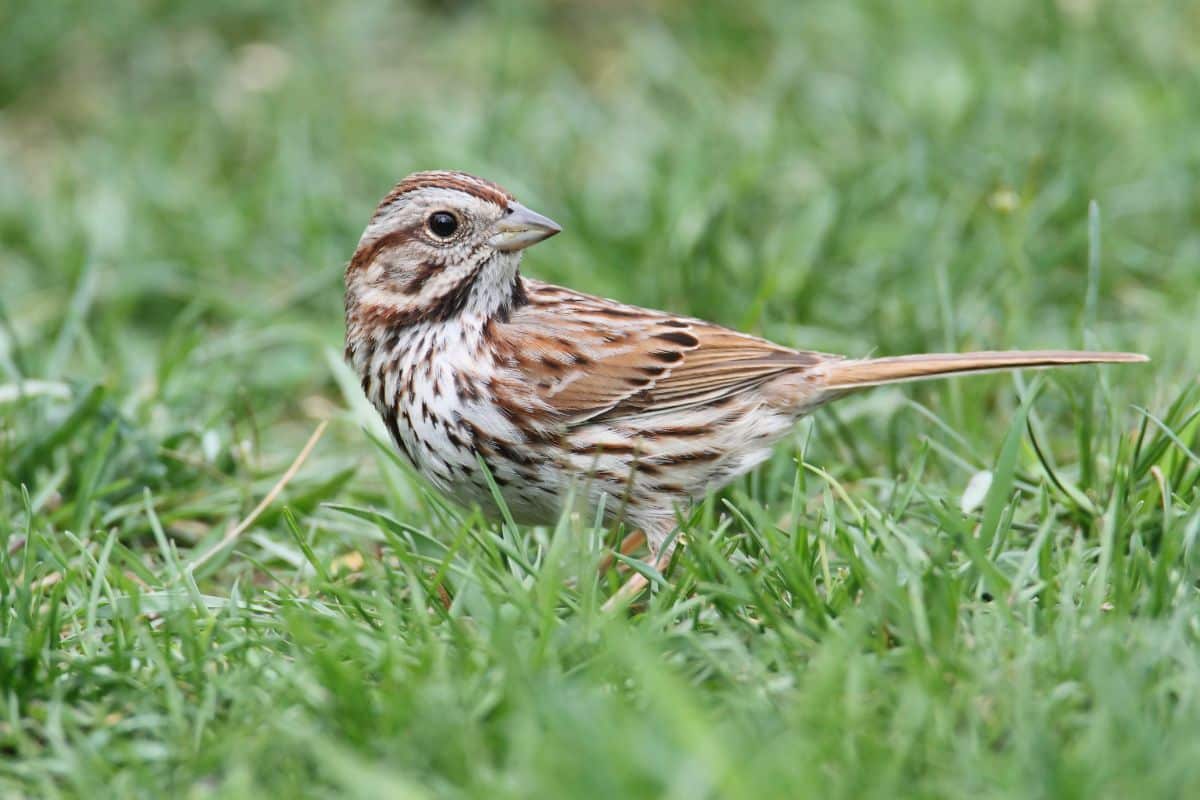
Scientific Name: Melospiza melodia
Length: 4.7 – 6.7 in
Weight: 0.4 – 1.9 oz
Wingspan: 7.1 0 9.4 in
This small gray and brown bird features gorgeous patterns and shows up across North America. It eats insects and sings beautiful songs, making it an excellent addition to your yard. Song Sparrows are frequent visitors of feeders and nest boxes.
21. Nighthawks
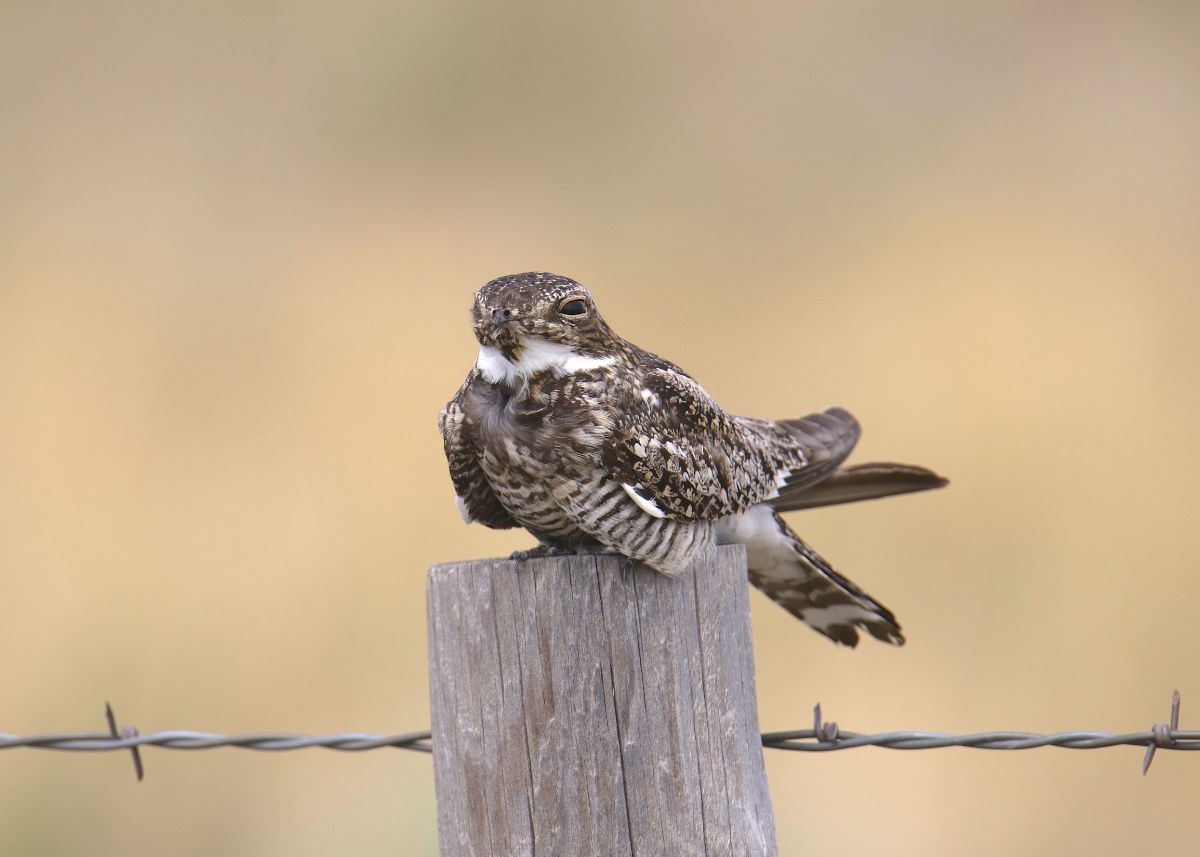
Scientific Name: Chordeiles minor
Length: 8.7 – 9.4 in
Weight: 2.3 – 3.5 oz
Wingspan: 20.9 – 22.4 in
Despite the intimidating name, Nighthawks feed mainly on insects. They’re common throughout North and South America and boast long wings and beautiful, dark patterns.
Final Thoughts
If mosquitoes are an issue on your property, it might help if you try attracting the right kinds of birds. The species above are all fairly common and feed on insects frequently, making them ideal additions to any landscape.
